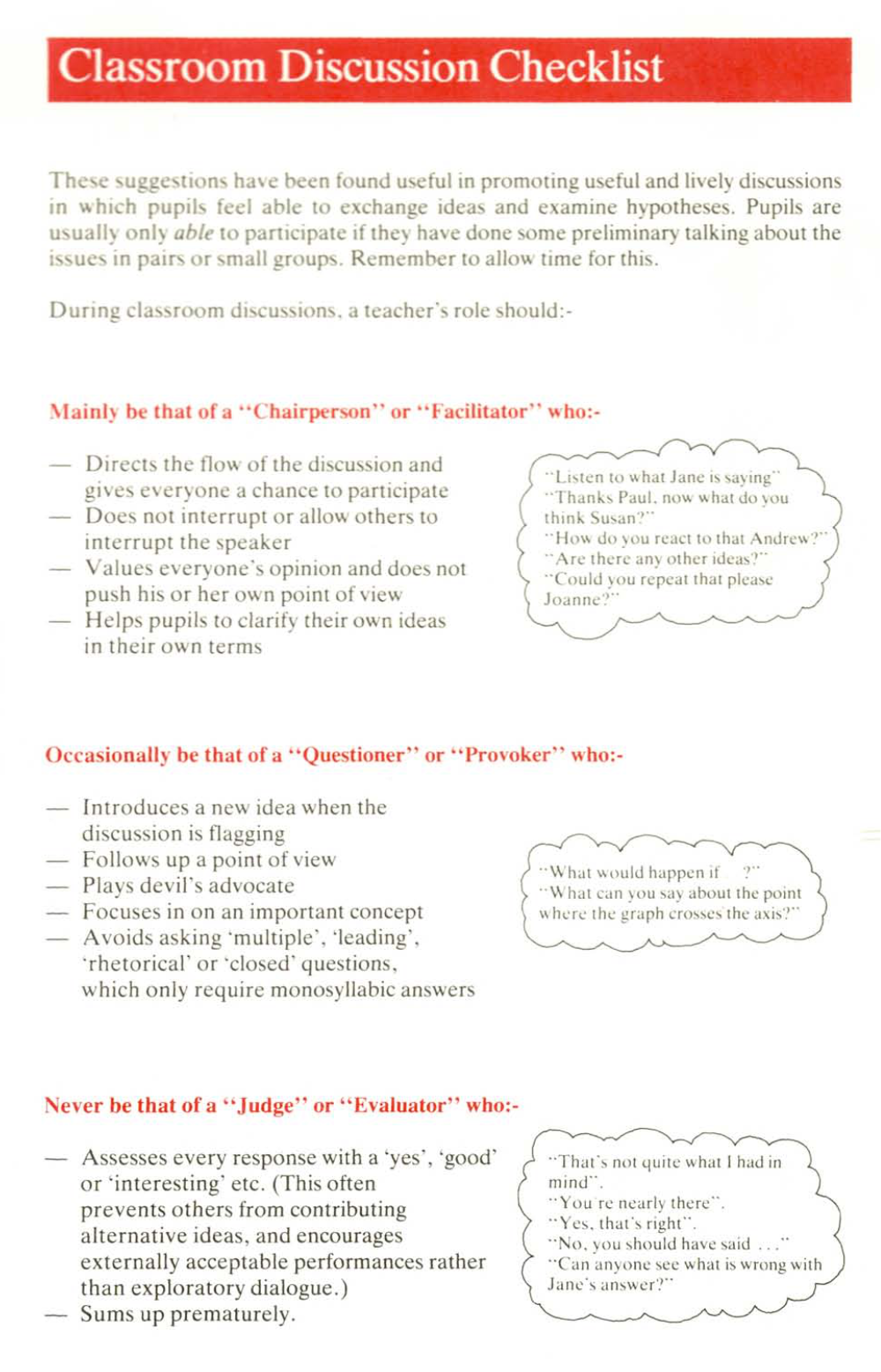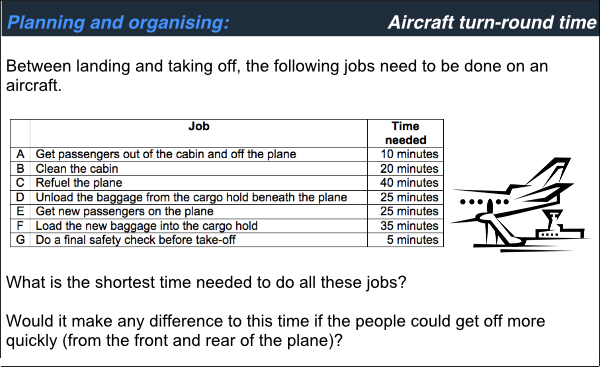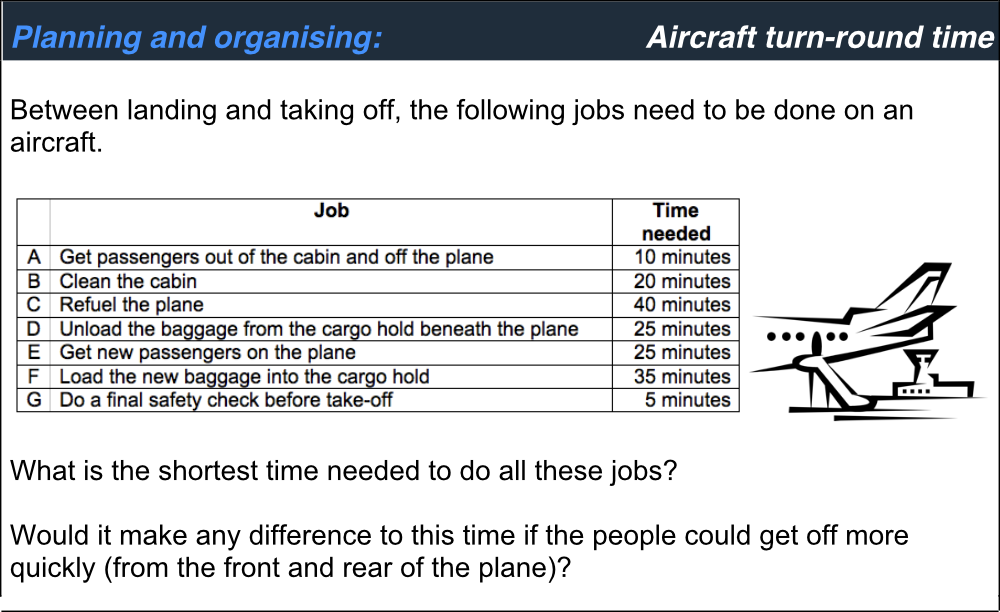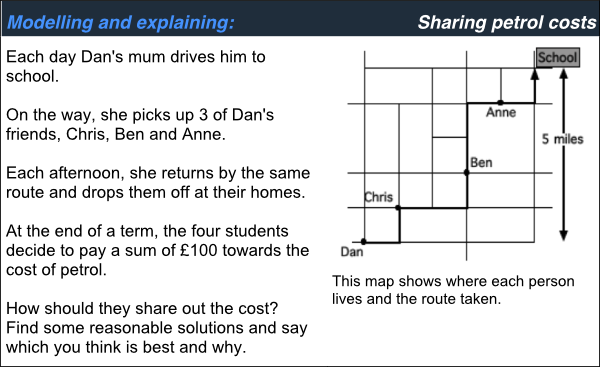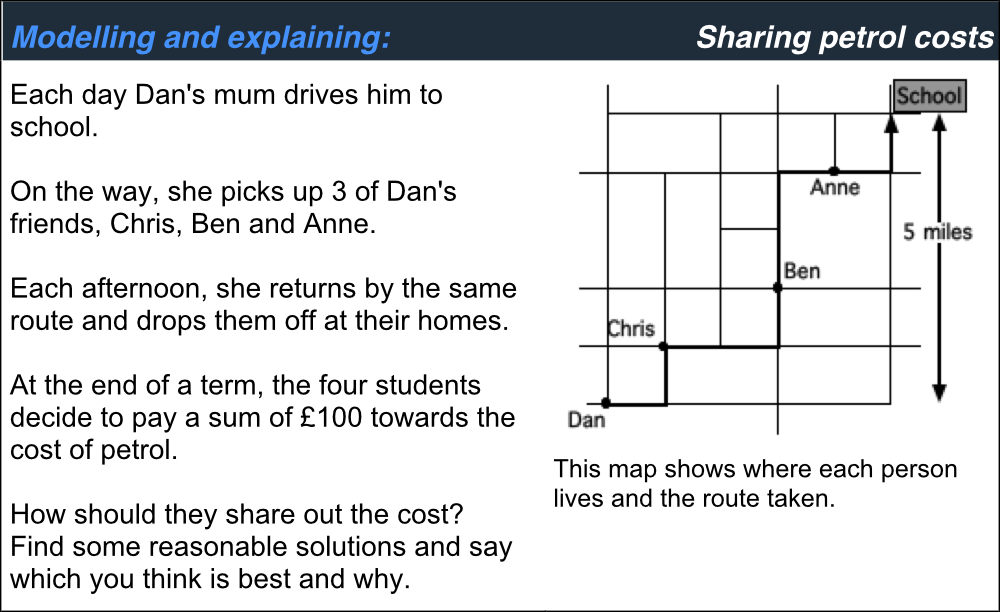30 Design Strategies and Tactics from 40 Years of Investigation
Appendix: Further information and examples
Materials-based professional development
We start from two facts. Designing excellent activity sequences for teachers' professional development is at least as challenging as designing excellent lessons. The demand for professional development far exceeds the number of PD leaders who have the creativity, skill and experience in leading effective professional development activities. By 'effective' we mean that, as well as being interesting and enjoyable which they usually are, the activities actually lead to changes in the teachers' classroom practice. Such changes are often essential for teaching innovations that the Shell Centre team developed (see Alignment). This led the team to design and develop materials for others to use in leading professional development activities. Though initially designed for teachers using our teaching materials, the PD materials tackle specific challenges of pedagogy and of mathematics that are general.
The professional development activity sequences are based on the following principles:
- constructive learning: like students, teachers best learn important principles of good teaching by 'constructive generalisation' from high-quality experiences in their own classroom
- time-cost effectiveness: time for teachers to work together is usually far too limited; the most effective way to use it is in structured discussion of well-specified issues. Information can be conveyed 'off-line' - i.e. on-line or on paper.
We describe two examples below.
Aside – lessons as PD: Teaching materials themselves can lead teachers to broaden their expertise, even when there is little or no explicit aligned professional development. This proved true to some extent for the examples elsewhere in this paper. However, such gains are no substitute for an ongoing program of well designed professional development
Bowland Maths
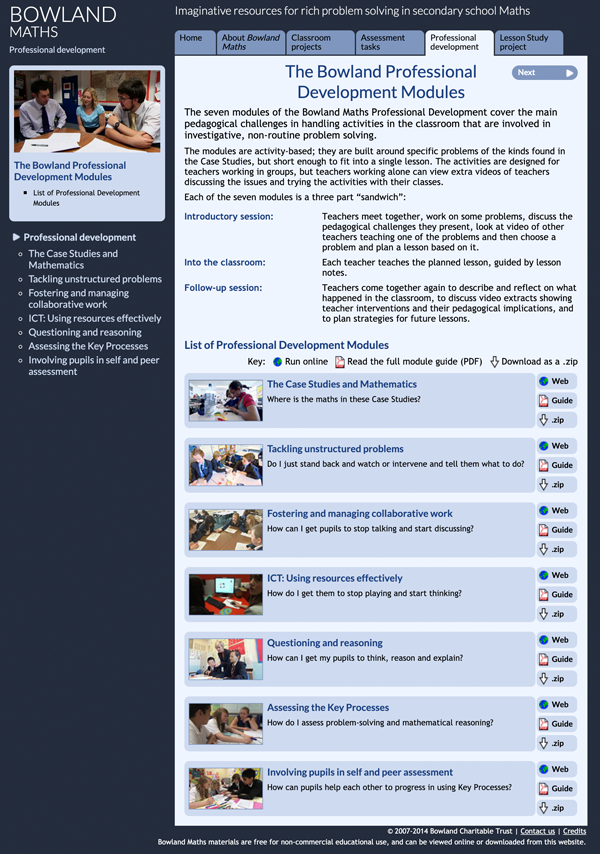
Bowland Maths is a coherent collection of materials for teaching, assessment and professional development. The 'case studies', for classrooms in the age range 11-14, are 4-5 lesson units where students work together to tackle problems from outside mathematics.
The professional development support materials are modules, supported by video guidance for the sessions as well as lesson videos – each module is:
- focused on a specific pedagogical challenge - such as:
- Tackling unstructured problems – Do I stand back or intervene and tell them what to do?
- Fostering and managing collaborative work – How can I get them to stop talking and start discussing?
- Using technology effectively – How can I get them to stop playing and start thinking?
- Questioning and reasoning – How can I ask questions that improve thinking and reasoning?
- Assessing modelling processes – How do I assess progress?
- Involving students in self and peer assessment – How can students help each other to progress?
- built around a 'Sandwich Model' of three sessions:
- Introductory session: Teachers work on problems provided, discussing specific pedagogical challenges that are the focus of the module. They then watch video of other teachers using these problems, and together plan a lesson using given materials.
- Into the classroom: Teachers all teach the planned lesson in their own classroom.
- Follow-up session: Teachers describe and reflect on what happened, discuss video extracts, and plan strategies for future lessons.
A detailed description of the activities for, say, the Questioning module, can be downloaded from the Bowland Maths website.
As with the case study materials, the 3 classroom lessons offered with each module, with video extracts, are based on a variety of modelling task types:
- Plan and organize – Find optimum solution subject to constraints
- Design and make – Design an artefact or procedure, and test it
- Model and explain – Invent, interpret, explain models
- Explore and discover – Find relationships, make predictions
- Interpret and translate – Deduce information, move between representations of data
- Evaluate and improve – Review and improve an argument, a plan, an artifact.
We illustrate the tasks for two of these.
Variants of the modules have been created for other projects: Improving Learning in Mathematics in the UK, PRIMAS across the European Union and the US-based Mathematics Assessment Project.
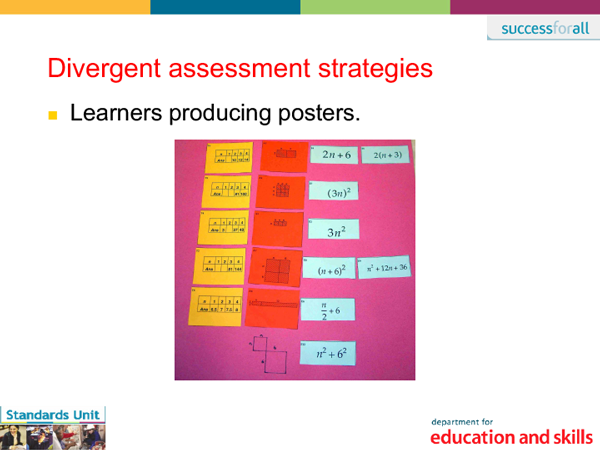
UK STEM Library
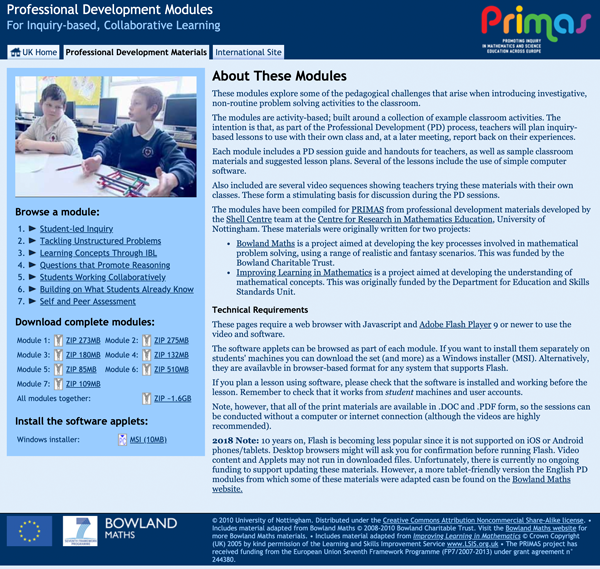
PRIMAS PD website
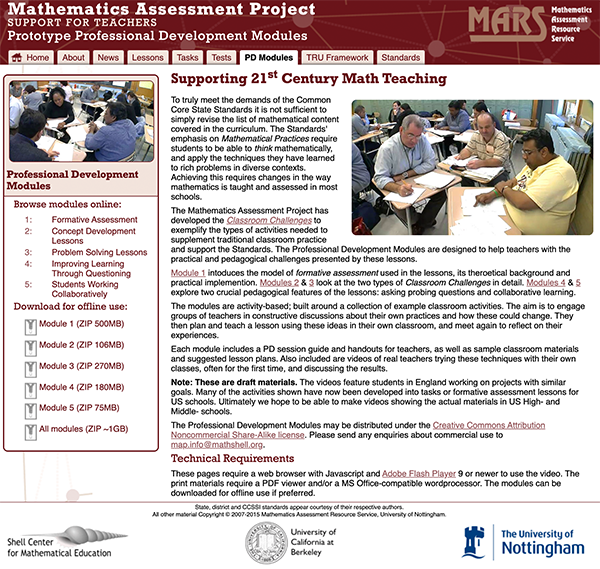
MAP PD website
Links to materials:
- Bowland Maths PD website
- https://bowlandmaths.org.uk/pd/
- LFG Unit A extract
- http://educationaldesigner.org/ed/volume4/issue13/article53/links/materials/lfg_masters_a_paged.pdf
- Improving Learning in Mathematics (from the UK STEM library)
- https://www.stem.org.uk/elibrary/collection/2933
- PRIMAS PD
- https://www.primas.mathshell.org/pd.htm
- Math Assessment Project PD
- https://www.map.mathshell.org/pd.php
Testing Strategic Skills
The modules in this project (see Gradual Change) also developed materials to support and structure professional development sessions, each focused on specific challenges that the teaching of the module presents.
The materials are divided into two parts - those that are part of the Teachers Guide, and those that accompany the videotape and microcomputer programs in the rest of the pack - an innovation at this time. Both are written under the same headings and are usable together or independently. They offer support to individual, or groups of teachers who wish to develop their teaching methodology and explore wider implications of problem solving in the classroom.
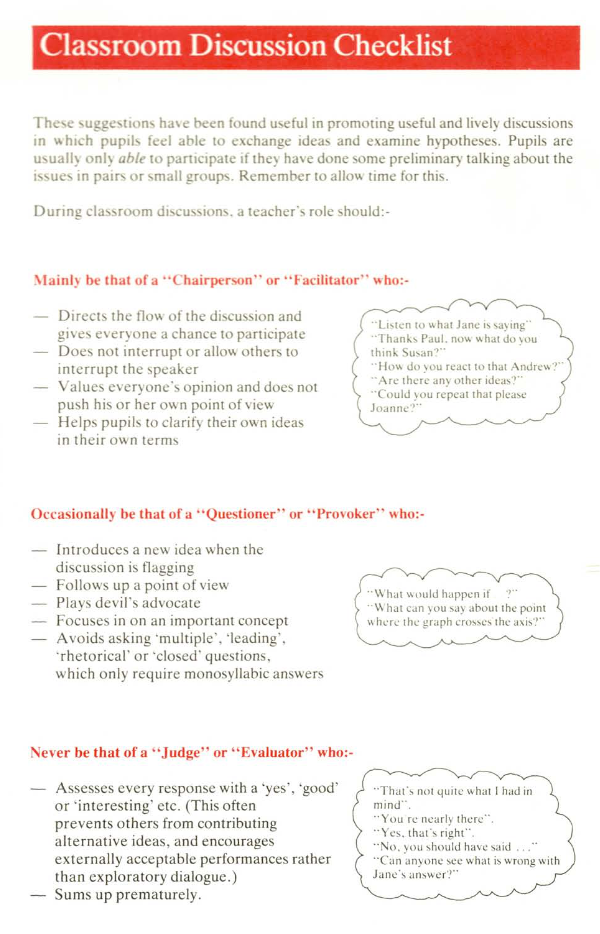
Enlarge…
- Looking at lessons
- Experiencing problem solving
- How much support do children need?
- How can the micro help?
- Assessing problem solving
However, since the modules could not depend for their usability on schools carrying through this professional development, it was decided that the minimum essential changes in teaching style for the module to work must be written on the back inside cover. That for The Language of Functions and Graphs is given here.
